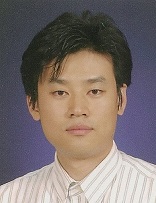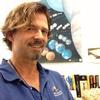Research Terms
Soil Mechanics Condensed Matter Physics Space Sciences Asteroids Lunar Sciences Planetary Sciences Mars Space Missions Technology
Center for Microgravity Research and Education
| Director |
Philip Metzger |
| Phone | 407-823-2012 |
| Website | https://sciences.ucf.edu/physics/microgravity/ |
| Mission | The Center for Microgravity Research (CMR) is a joint venture of the University of Central Florida and Space Florida that conducts and facilitates research in microgravity sciences. The Center makes use of parabolic airplane flights, drop towers, suborbital rocket flights, and orbital flights. The Center’s educational activities include providing hands-on training and experience to college and university undergraduate and graduate students in the design, fabrication, and operation of space experiments. |
The University of Central Florida invention is a method to extract lunar water, drastically reducing the energy and complexity of lunar mining operations and helping to establish this industry. The process consists of robot mining of the regolith (loose, heterogeneous superficial deposits covering solid rock), transferring the mined material to a conveyer, and passing the soil through grinding and crushing stages. Included are mechanisms to sort the material into ice, metals, and other minerals, and final transport and cleanup.
Technical Details
The UCF invention is a system and methods for extracting water from lunar regolith. An example application can include:
Each split stream may include a magnetic separator that further separates the magnetic and paramagnetic lithic fragments from ice particles to discharge up to 80 percent of lithic fragments to slag.
Partnering Opportunity
The research team is seeking partners for licensing and/or research collaboration.
The University of Central Florida invention is a system and method for improving the sintering of lunar soil. The moon contains a wide variety of building materials for landing pads, radiation protection, meteoroid shields, and other uses. A favored method for stabilizing the regolith for construction is sintering. The process is simple, scalable, and creates a material strong enough to withstand the high temperatures of rocket exhaust. However, current sintering methods and their substantial energy requirements could delay or prevent other needed lunar projects. Also, the methods create a non-uniform temperature field in the soil which creates an inadequate sinter quality.
As a solution, the UCF system makes sintering faster with less risk of runaway melting, reduces the energy required (by 50 percent or more), and creates a better-sintered product by maintaining a constant temperature throughout the depth of the sintering material. In an example application, the entire system (excavating, beneficiating, laying and compacting layers, and sintering) can be packaged onto a single robot for single-pass construction of landing pads and roads. The functions can also be separated into distinct excavation, beneficiation, and construction machines for larger-scale efficiency in future operations.
Partnering Opportunity
The research team is looking for partners to develop the technology further for commercialization.
















































